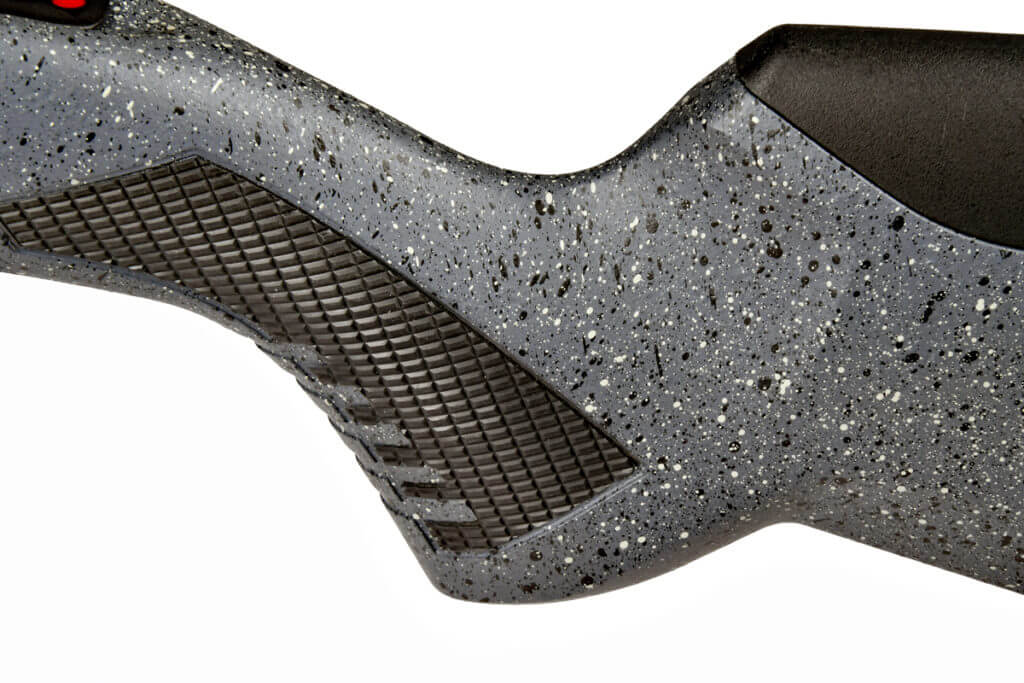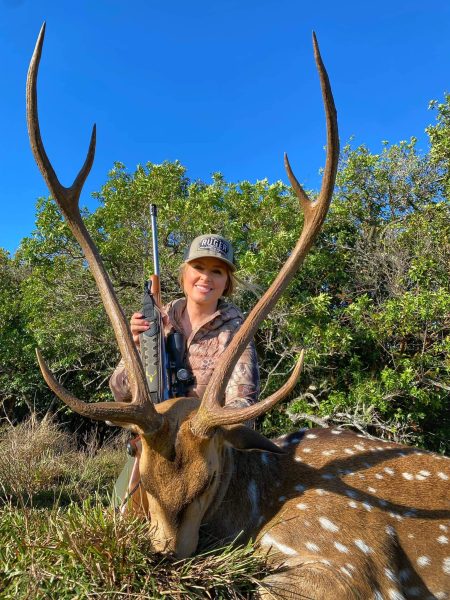The Carbon Predator is an accurate, updated, lighter version of the venerable Model 110 with a Proof Research carbon fiber-wrapped stainless barrel and a stock that allows for a custom fit.

Estimated reading time: 12 minutes
The Savage Model 110 debuted 60 years ago, and remains a mainstay of the Savage rifle lineup. Although it was always built around the same strong action, the design did not remain static. Savage made numerous improvements over the years, including some that were widely copied by other gun makers. Model 110 rifles earned a reputation for excellent out-of-the-box accuracy, but they were never considered lightweights compared to rifles designed for use in the high country.
Some of the 45 different Model 110 variations now offered by Savage weigh north of eight pounds. Savage cuts that weight considerably in newer guns like the Model 110 Carbon Predator, which tips the scales at less than seven pounds in some chamberings. I still would not want to climb the Himalayas with it, but the Carbon Predator is light enough for most hunting purposes.
Savage offers the Carbon Predator in chamberings that make it useful for more than hunting predators, as the name implies. Current chamberings include 22-250 Rem. 223 Rem., 300 AAC Blackout, 6mm ARC, 6.5 Creedmoor and 308 Win.
Table of contents
- Carbon Fiber-Wrapped Barrel
- Three-Position, Tang-Mounted Safety
- An Excellent Trigger
- READ MORE: The Hunter to the Hunted: Savage Arms Introduces New 110 Carbon Predator
- AccuFit Stock
- Carbon Predator Range Results
- Excellent Accuracy
- Final Thoughts
- Carbon Predator FAQs
- Specifications for the Carbon Predator
- Contacts
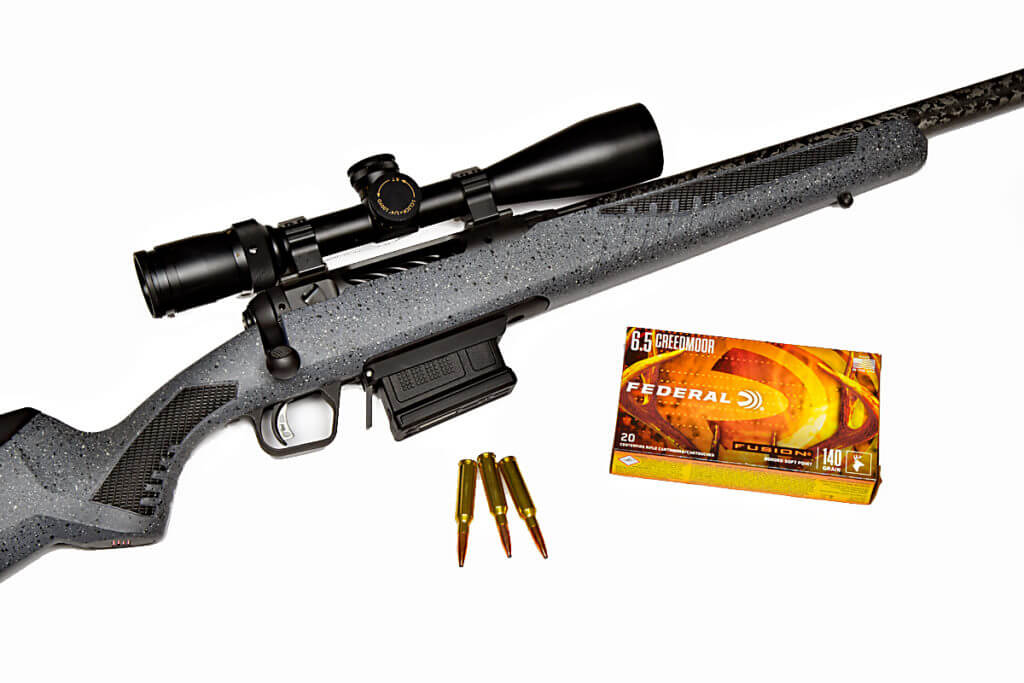
Carbon Fiber-Wrapped Barrel
Savage trimmed weight from the rifle primarily by employing a carbon fiber-wrapped, cut-rifled, stainless-steel barrel from Proof Research. The muzzle is threaded (1/2 inch x 28) for brakes or suppressors and is topped with a knurled, stainless steel thread protector. In range testing, the barrel dissipated heat much more quickly than traditional all-steel barrels. The 1:8-twist barrel on my test rifle, chambered in 6.5 Creedmoor, measured 22 inches in length, but you can also get the Carbon Predator in 6.5 Creedmoor with an 18-inch barrel. Guns chambered in 22-250 Rem. also have 22-inch barrels, while rifles in other chamberings come with 16-inch or 18-inch barrels.
Savage hand-fits barrels to actions with a barrel locknut that results in precise headspacing. Some purists turn up their noses at the appearance of the barrel locknut, but this zero-tolerance approach to headspacing contributes to accuracy. So does the Savage floating bolt head, which self-aligns to a degree.
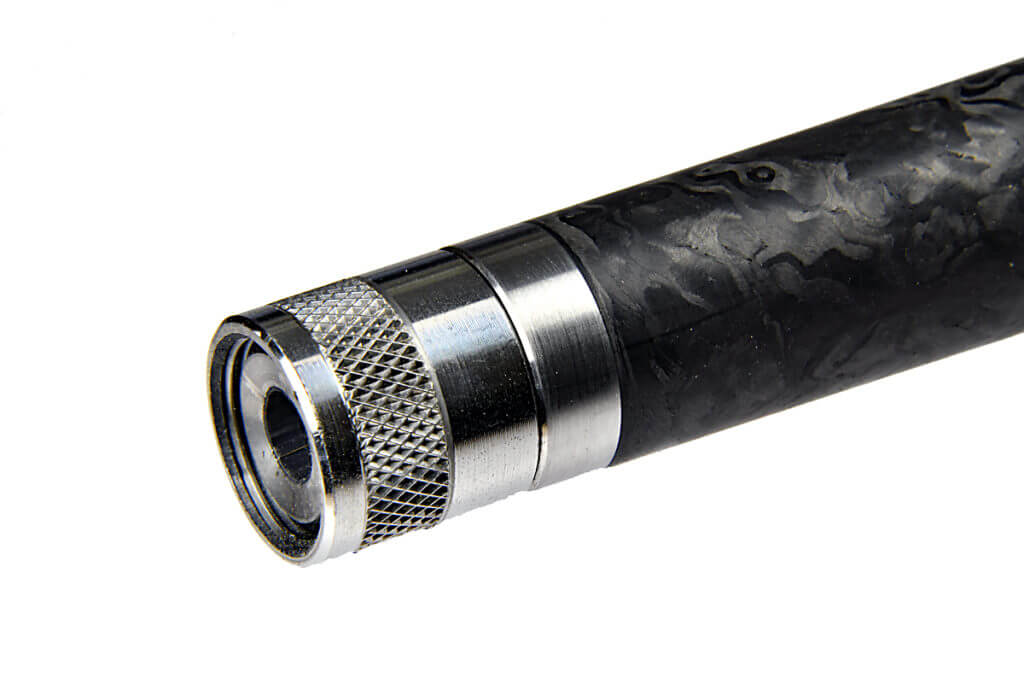
Three-Position, Tang-Mounted Safety
The rugged, push-feed, carbon-steel 110 action uses a bolt with two substantial locking lugs and a plunger ejector. For the Carbon Predator, Savage spiral-fluted the bolt to further reduce weight. The bolt cycled forward and backward with acceptable smoothness but was relatively stiff-cocking. The gun fed rounds from a five-round AICS-style detachable polymer magazine reliably, but not entirely smoothly, as a few rounds seemed to hang up slightly before chambering. Spent cases ejected smoothly and reliably. At the rear of the receiver, you will find a tang-mounted, three-position safety. It allows you to cycle rounds through the action with the safety switch in the middle, engaged position. The bolt locks down with the safety in the rearmost position.
One characteristic of the 110 action that I have never been fond of is its somewhat clunky bolt-removal process. Ensuring that the gun is unloaded with the safety in the off position, you must simultaneously press the bolt-release button and trigger with one hand, and withdraw the bolt with the other hand. You must follow the same process to insert the bolt back into the action. If Savage ever redesigns the 110 action, I suggest they take a hard look at that mechanism.
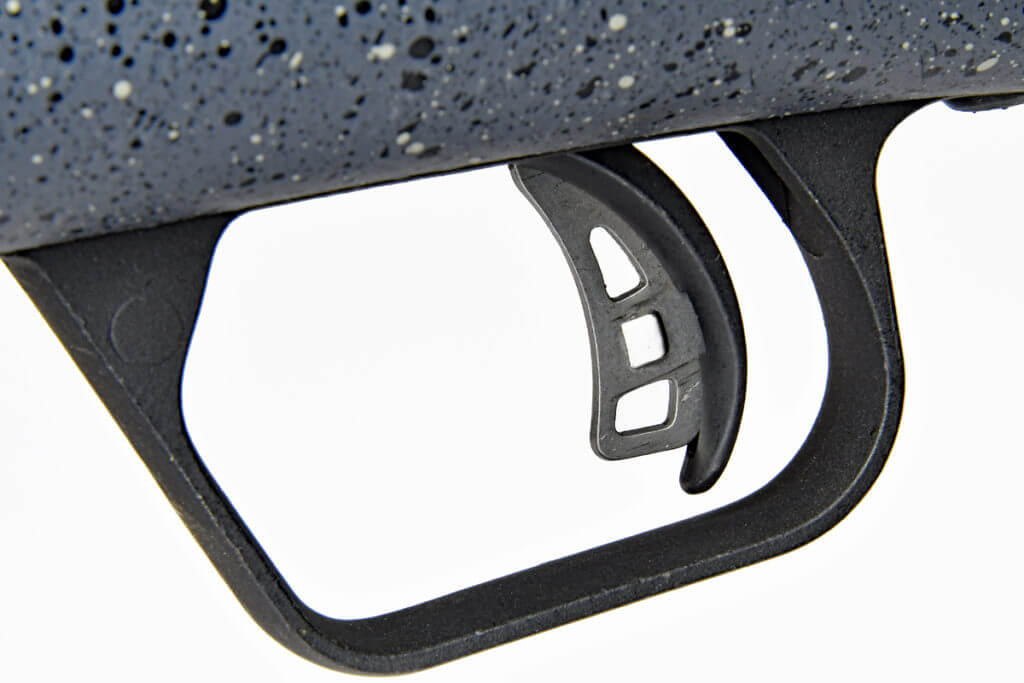
An Excellent Trigger
On the plus side of the ledger, the receiver comes with two-piece, Weaver-style bases installed, making scope mounting a breeze. The Carbon Predator also uses the much-copied Savage AccuTrigger. This two-stage design incorporates a “safety blade” mechanism that shooters either love or hate. The trigger is adjustable down to a pull weight of 1.5 pounds. As my test rifle arrived from the factory, the trigger broke crisply, with no creep, and an average pull weight of just under 2 pounds, four ounces. That’s a good setting for a hunting trigger, so I left it as it arrived for testing.
READ MORE: The Hunter to the Hunted: Savage Arms Introduces New 110 Carbon Predator
The action is bedded into the rigid, aluminum-rail AccuStock bedding system, which engages the action three-dimensionally along its entire length. In addition to ensuring that the action doesn’t shift in the stock, the bedding system adds rigidity to what would otherwise be just another overly flexible polymer stock. The stock forend still flexes a little more than I would prefer, but the bedding system compensates for this.

AccuFit Stock
The Carbon Predator’s composite stock employs the AccuFit system, which allows you to easily custom-fit length of pull and comb height for more comfortable, accurate shooting. The rifle ships with five different risers to adjust comb height and four different inserts to adjust the length of pull. All you need is a Phillips Head screwdriver. This system turns the rifle into a gun that can more comfortably fit shooters of smaller stature and allows a hunter to adjust fit when bundled up in heavy winter clothing. Molded, checkered rubber inserts are located in just the right places to ensure a solid grip in wet weather, and the stock has a generously sized, soft rubber recoil pad.
The sporter-profile stock gives the gun an aesthetically pleasing look with clean, straight lines, complemented by the visual contrast between the matte-finish, granite-gray stock, and black inserts. The rifle balances nicely in the hands, and the pistol grip has a slight amount of palm swell that helped me maintain a consistent grip and trigger pull. Still, I found myself wishing that Savage would switch to a carbon-fiber stock for this gun. That would decrease weight and increase rigidity, but it would also jack up the price significantly. All things considered, the stock represents a big improvement over many Savage stocks used in years past.
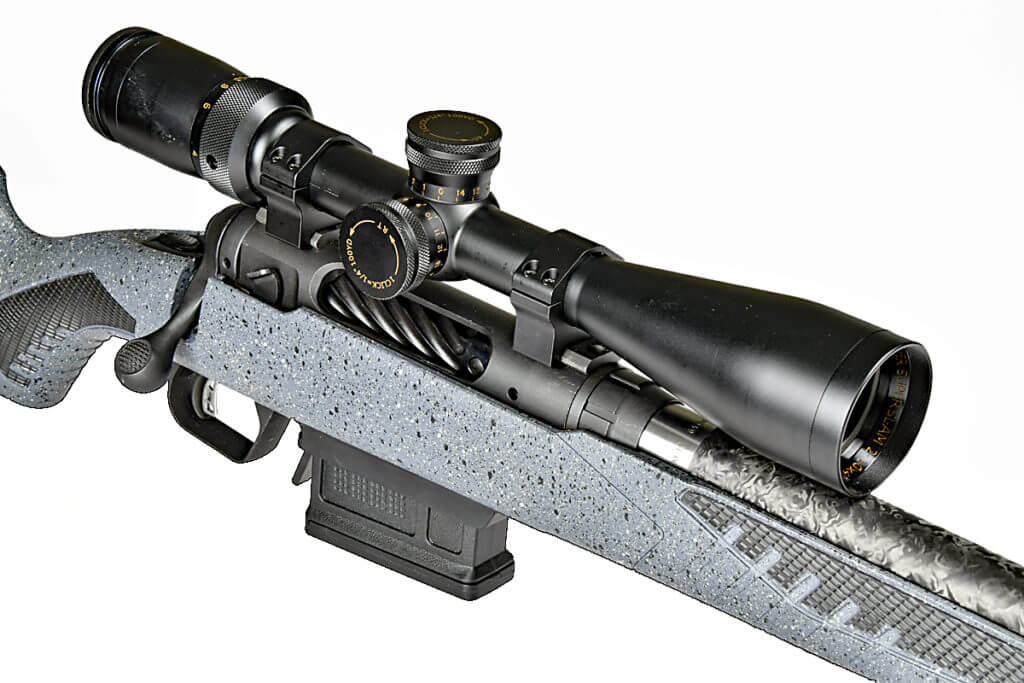
Carbon Predator Range Results
For range testing, I mounted an old favorite rifle scope, a Weaver Super Slam 2-10 x 42 model, in a set of Talley scope rings. With the rifle zeroed, I ran four different hunting loads, with bullet weights ranging from 125 grains to 143 grains, over my CED M2 chronograph. I deliberately chose to test hunting loads, versus match loads, because the Carbon Predator is a hunting rifle and I wanted to see what I could expect in the field.
Velocities out of the rifle’s 22-inch barrel were not far off from factory-stated velocities, which are typically derived using longer barrels. Measured velocities ranged from 2,606 fps for a Hornady Precision Hunter 143-gr. ELD-X load to 2,790 fps for a Winchester 125-gr. Deer Season XP load. These velocities were slightly slower than factory-claimed numbers, within a range of 49 fps to 94 fps, which is about right for a 22-inch barrel. I expect those speeds might increase a little with more barrel break-in.

Excellent Accuracy
With the chronograph session out of the way, I moved on to accuracy testing, shooting three, three-shot groups per load. Initial results were disappointing and not up to the accuracy standard I have come to expect from Savage rifles – especially one chambered in 6.5 Creedmoor. I knew something was amiss. I checked the scope rings to make sure everything was torqued to spec, and it was. That was not the culprit.
I then checked the action screws and found they were not quite as snug as I thought they should be. I torqued them down, made another trip to the range, and quickly discovered that the rifle was on track. All four tested loads produced sub-MOA average groups. The most accurate load, unsurprisingly, was the Hornady Precision Hunter 143-gr. ELD-X load. It printed average groups measuring 0.58 inches and the best group measuring just 0.30 inches. A 140-gr. Federal Fusion load also shot well. It produced 0.79-inch average groups and a best group of 0.63 inches. Those groups are more in line with the accuracy I am accustomed to seeing with Savage rifles.
I expected the rifle would shoot bullets with those weights well, but was surprised at how well the rifle shot lighter bullets. The hottest load-tested, a Winchester 125-gr. Deer Season XP load still produces sub-MOA average groups. The rifle wasn’t allergic to all-copper bullets, either, as some rifles can be. A Barnes VOR-TX LR 127-gr. load shot a 0.60-inch best group and 0.82-inch average group.
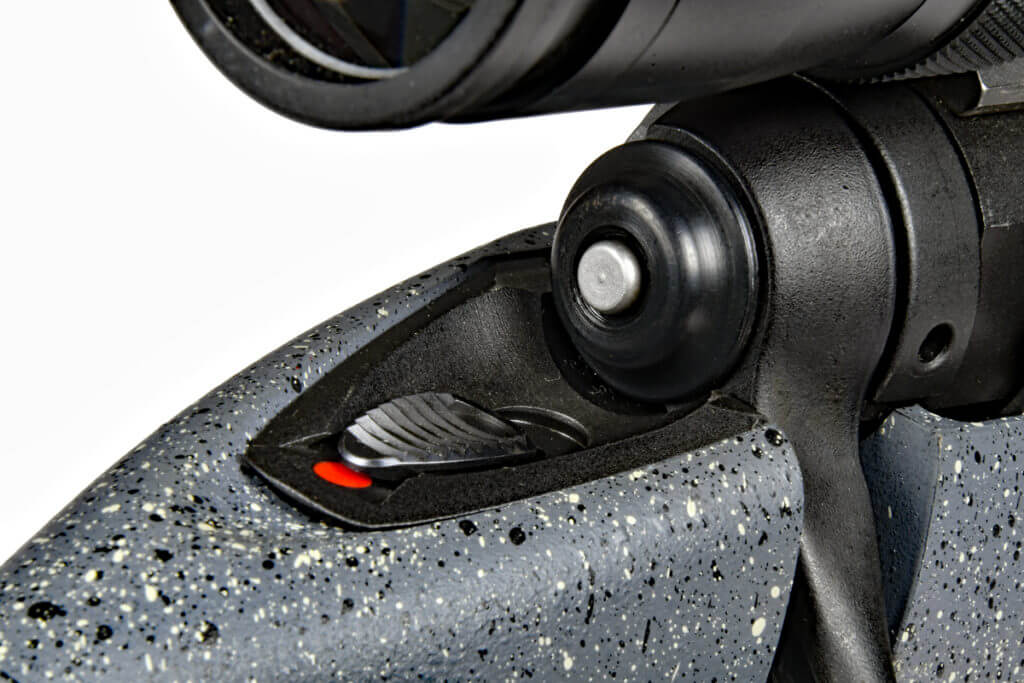
Final Thoughts
With the action screws tightened up a bit, the rifle demonstrated excellent accuracy for an off-the-shelf hunting rifle using hunting loads. While the gun does not have an economy rifle price, I’ve shot much more expensive rifles that did not perform as well as the 110 Carbon Predator. Savage rifles have always been relatively affordable. With an MSRP of $1,695, the Carbon Predator is one of the pricier models in the Model 110 lineup, thanks to its carbon fiber-wrapped barrel, but in this case, you get what you pay for and then some.
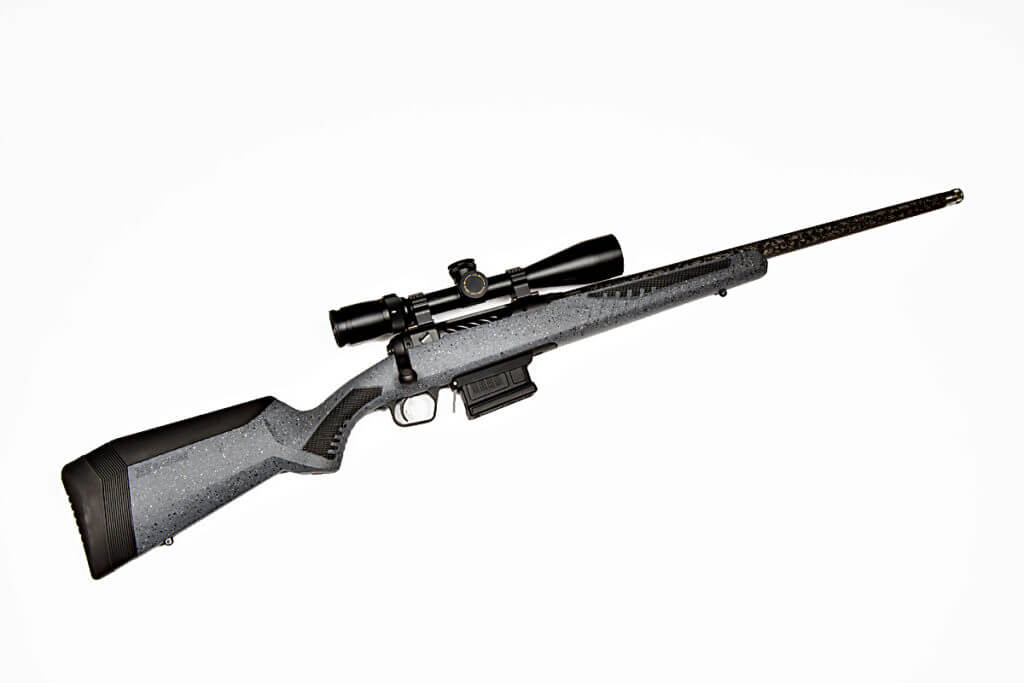
Bergara Premier Canyon Rifle 6.5 Creedmoor
| Load | Avg. Velocity (feet per second | Avg. Group 100 yards | Best Group 100 yards |
| Barnes Vor-TX 127 gr. LRX BT | 2,744 | 0.82 | 0.60 |
| Federal Fusion 140 gr. SP | 2,676 | 0.79 | 0.63 |
| Hornady Precision Hunter 143 gr. ELD-X | 2,606 | 0.58 | 0.30 |
| Winchester Deer Season XP 125 gr. | 2,790 | 0.93 | 0.81 |
Carbon Predator FAQs
Q: What caliber options are available for the Carbon Predator?
A: The Savage Carbon Predator is available in various popular calibers, including .223 Remington, .22-250 Remington, .243 Winchester, and 6.5mm Creedmoor, among others.
Q: What features set the Savage Carbon Predator apart from other rifles?
A: The Carbon Predator features the Savage AccuFit system, which allows shooters to customize the length of pull and comb height for a personalized fit. It also has Savage’s AccuTrigger, known for its crisp and adjustable pull.
Q: Is the Carbon Predator suitable for hunting?
A: Yes, the Savage Carbon Predator is designed for hunting, particularly predator hunting. Its lightweight construction makes it easy to carry in the field, and its accuracy is well-suited for precision shots.
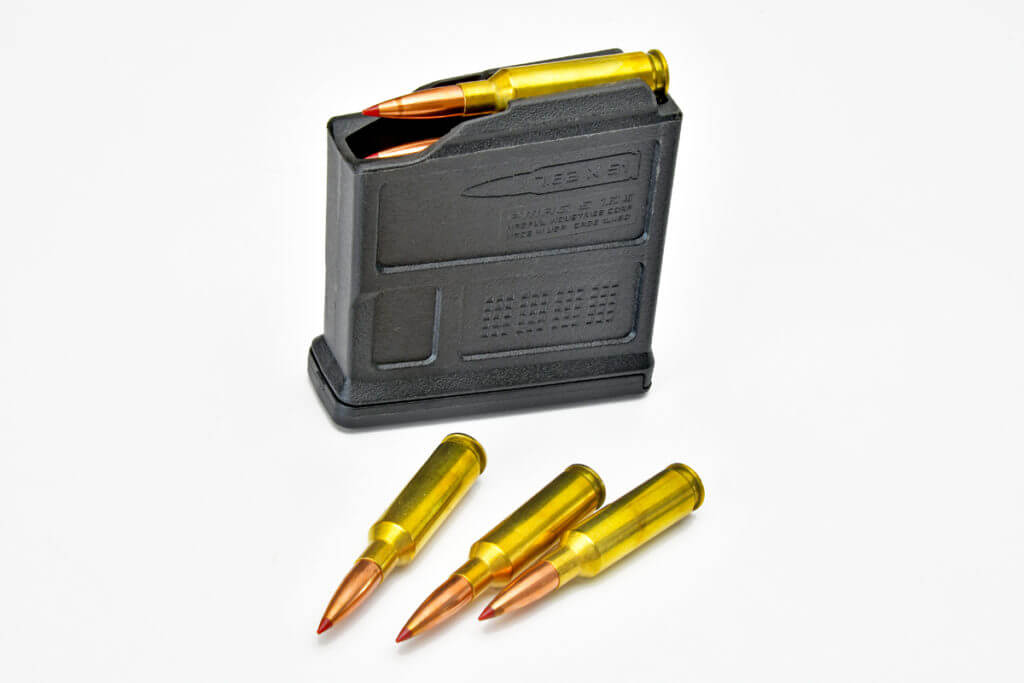
Specifications for the Carbon Predator
Savage Model 110 Carbon Predator Rifle
Caliber: 6.5 Creedmoor, as tested
Action Type: Push-feed bolt action
Trigger: AccuTrigger, adjustable
Barrel: Proof Research 22-inch stainless, carbon fiber-wrapped
Rate of twist: 1:8
Stock: AccuStock, adjustable, composite and aluminum
Stock finish: Granite gray with molded rubber inserts
Magazine/capacity: AICS-style detachable, 5+1
Sights: None, pre-installed two-piece Weaver style bases
Overall Length: 42.25 inches, adjustable
Weight: 7.3 pounds
MSRP: $1,695.00
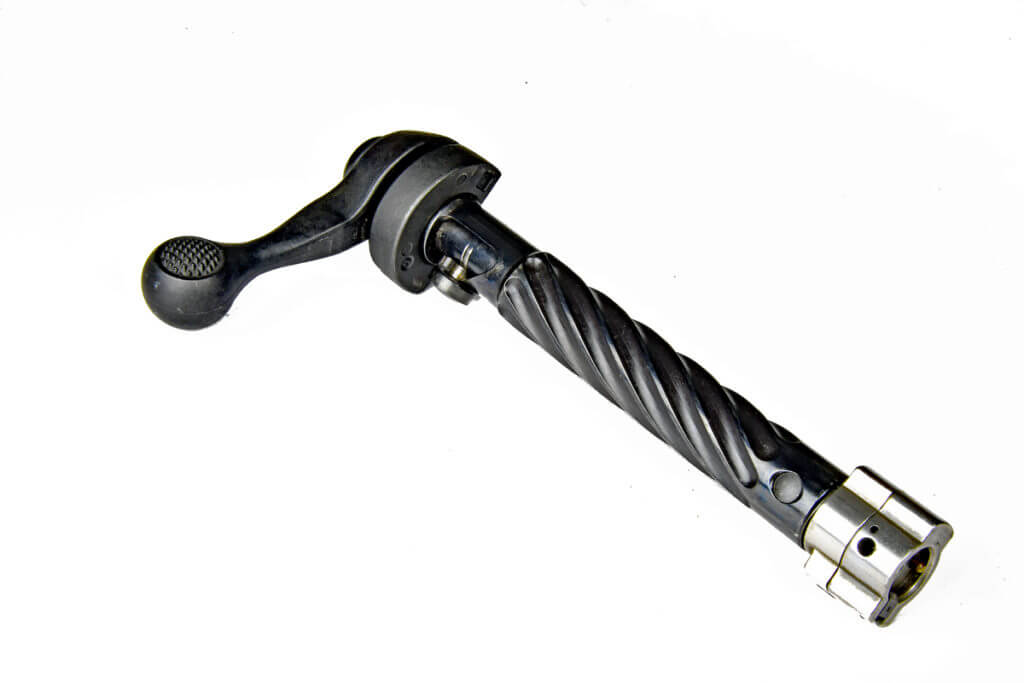
Contacts
